Some Tales of Beech Road, Cale Green
Collected by Charlie HulmeDavenport Station home | Index to History pages
Beech Road, part of the Cale Green Conservation area established in 2006, was created in the 1880s by drawing a straight line across three fields which were previously part of Cale Green Farm, as explained in our Cale Green Park website.

The road has retained much of its original character, although the original stone 'setts' have been replaced (or covered?) with tarmac; in addition to housing, there is the former Girls' High School (today's Hulme Hall school), and the pavilion of Stockport Cricket Club.
Here we look mostly at the houses, and a selection of families who lived in them over the years up to the 1930s. The houses appealed to businessmen, and public servants, and seem to have been in many case a step on the ladder to larger houses of the kind to found on the Bramhall side of the railway, or beyond.
The earliest houses bear the date 1888, and the range on the north side was probably the first to be built, for developer Henry Wild (see left column.) They have the highest house numbers, but the use of such numbers was not universal in the 1880s.
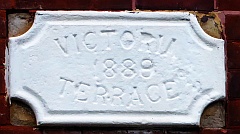
Identification was by carved plaques high on the front wall, often shared by pairs of semi-detached houses or whole terraces.

The postman had to know his patch! House names of detached and semi-detached houses were often incorporated in gateposts, although many of these are now missing due to the need to provide car parking.
Starting from the Warren Road end furthest from Bramhall Lane, on the left corner is no.94 Beech Road, which really belongs to its attached terrace on Warren Road.
On Beech Road 'proper' the first group of three on the left, 'Lees Terrace' (nos 88-92), and 'Mona Terrace' (82-86) were built at slight angles to the road, unlike all the others. Whether for artistic reasons, or an error, we'll never know.
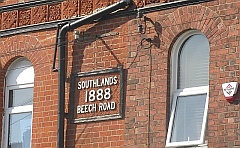
'Southlands', (74-80) proclaims its name and date (1888) on a larger-than-normal plaque. Was it perhaps built first?
Later developments
On the section towards Bramhall Lane, there is a long gap on the even-numbered side for the playing-field of the Hulme Hall School (formerly High School for Girls) and the houses vary more in design. Odd nos 1-29 are not shown on the Ordnance Survey map dated 1898.Part way along the 'odd' side, between no. 41 and no. 39 there is change of building design, also seen in 'evens' 12-22 which were built by William Winbolt.

The older houses had bricks laid in 'flemish bond' with alternate bricks laid end-on in a wall two bricks thick.
Nos. 1-39 have the modern 'stretcher bond' with all the bricks laid lengthwise, the wall comprising two walls of bricks having an insulating cavity between.
For a while there was a space between 65 and 67 which was not allowed for when the house numbers were allocated, resulting in the need for 'a' and 'b' suffixes.
By 1922, all the houses were present. It's a tribute to Henry Wild and other builders that all the original houses, except for no.26 on the corner of Heath Road, remain intact, some over 110 years old in 2020. No. 26, and its neighbours on Heath Road, became part of the school until eventually demolished.
The Church
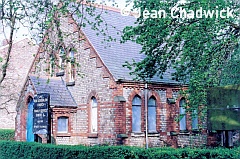
The only building now lost to us was the Swedenborgian Church at the Bramhall Lane end which was demolished c. 1990, replaced in 1998 with a pair of houses which, in accordance with Conservation Area standards, are built in a modern interpretation of that of the other houses in the road, even sporting a date plaque.
The building was erected on land sold by William Edward Carrington in 1890 to a John Thomas Rhodes; early directories describe it as a 'Gospel Hall.' Built in the 'header bond' style seen in other church buildings of the era,such as the Baptist church in Thompson Street, Edgeley, it served Stockport's members of the New Jerusalem, or Swedenborgian, church.
Its records are held in the Stockport library archives which are not accessible at the time of writing, and online information is scanty, Today the Stockport 'conference' meets in members' homes.
Henry Wild
The name of Henry Wild is forgotten today, yet his work shaped the appearance of much of our area. Tracing his life reveals a varied career.Born in Stockport in 1835, he grew up in a small dwelling in Back Water Street, a long-lost street in the the Portwood area. By 1861, with his wife Sarah Webb (whom he had married in 1852) and daughter Elizabeth, he was in business as a bookseller at 171 Higher Hillgate.

By 1871 Henry had become a machine broker (buying and selling machines) living at 80 Higher Hillgate, where he remained in 1881, by then with a new wife, Hannah. The advert from 1879 (above) from the sale of New Bridge Lane mill is an example of his work.
It seems that machine broking was a profitable business, as a few years later in 1887 he was able to lease much of the Beech Road area from the Carrington family at a rent of £60 per year, and fund the erection of houses. Farming continued on a small scale on the field which in 1910 was sold for the creation of the Girls' High School.
Apparently Henry was more of a entrepreneur than a 'master builder'. The 1891 census records him as a 'builder's merchant', and living in one of his houses, no. 77 Beech Road next to the entrance to the cricket ground which the Carringtons had donated to the local cricket club. An 1896 directory does list him as a builder, and gives both the 80 Higher Hillgate address as well as 77 Beech Road. His son, William Henry, was a clerk to the company; by 1896 when the land was acquired to build Countess and Winifred Roads, his name was on the lease. Sadly, he died in 1899 aged just 25; it appears that the business and the builder's yard on Winifred Road (later used for the electrical sub-station which stands in 2020) were taken over by the Winbolt family, who continued to build houses in a similar architectural style.
The houses were generally rented rather than sold, as was normal at the time. In addition to the Beech Road houses, Henry Wild's company also built houses in nearby streets, as well as on the other side of Bramhall Lane.
Henry Wild died on 25 February 1909, leaving an estate valued at £15,934 to be administered by his daughter Edna Wild and son-in-law Edwin Potts Marchington (a railway engineer, married to Sarah Wild), who by that time were living in Sheffield. They began to offer the houses for sale.
By then, the owner of the land was Henry Bell, of nearby Heathfield House, successor to the Carringtons. Under his ownership house-building in the area continued, including the creation of Heathfield Road.

This style of cast-iron street sign, characteristic of older Stockport streets, was not used for new streets after c.1896; Beech Road may be the newest street to have received one.
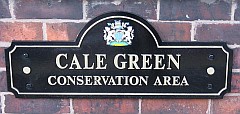
Street directory, 1907

Sources
John Clarke Morten,
I Remain, Your Son, Jack: Letters from the First World War Edited by Sheila Morten Wilmslow: Sigma Press, 1992,
Peter Norris, Arthur Henry Knighton-Hammond. Cambridge: Lutterworth Press, 1994,
The Land Registry
Ancestry.co.uk
Findmypast.co.uk
Cheshire Tithe maps
old-maps.co.uk
British Newspaper Archive
The Churches of Britain and Ireland website.
Street directories in our own collection.
History of White Hall - Derbyshire County Council
George Bennett: Institution of Civil Engineers Obituary
Stockport Council: Cale Green Conservation Area.
Stockport soldiers who died in World War I: archive.org

Beech Road comprises two sections: the eastern, older, part dating from 1887, and the western part, which was created at a later date, resulting in a 'kink' to avoid an existing building. This feature concentrates on the older section; the majority of the houses were built in a short period from 1887 to 1880, and all the original houses still stand, some in customised form, in 2020.
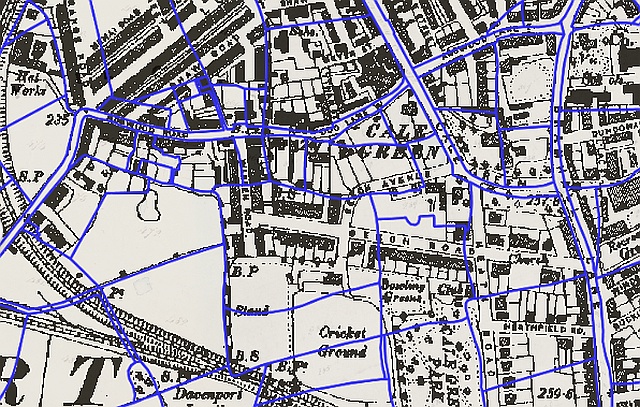
The road itself follows a straight line drawn across three fields on a map of Cale Green Farm, ignoring the existing field boundaries, by the owners of the farm in the 1880s, the Carrington family of Cale Green, hat manufacturers. The image above (from the Cheshire Tithe Maps website) shows field boundaries as they were in 1850 superimposed on a 1907-dated Ordnance Survey map. The line joins Bramhall Lane at one end with Warren Road (laid out a few years earlier). The area beyond Warren Road was, at the time, in different ownership, and indeed not in Stockport, being part of the old township of Cheadle Bulkeley. Boundary posts (B.P) and stones (B.S) marked the border; one still stands on Adswood Lane West.
Life and Times of No.76
Let's follow the time-line of 76 Beech Road as an example of the life of a typical Beech Road house up to 1939.
Built in 1888, No.76 was initially retained by Henry Wild for direct renting to tenants. In 1891, the householder was Thomas Anyon, a Preston-born accountant, with his two young sons. They had two live-in-in servants: a housekeeper and a general servant. By 1901 he had moved to a large house at 39 Acomb Steet, Manchester, married and had several more children including curiously-named Bimba Christina Anyon, who turns up on 1924 in a list of Civil Servants, working as a shorthand typist. By 1911 Thomas had retired and the family were living in Sheffield.
The next householder, by 1896 and at least until 1902, was Thomas Alfred Cox, Inspector of Education, Church Schools, with his wife Bessie and daughter Olive. Thomas was born in Salisbury in 1961; Bessie was also from Salisbury. The couple were based in London when Olive was born; school inspectors were often moved around the country, and by 1911 they were in Norwich.
 A
1907 directory lists Stockport-born stockbroker
Wilson Bayley Staveacre, at No.76. We
have a photograph of him, from a family tree uploaded to
Ancestry. He married Dora Ward in 1904 and they had
five children.. He became a member of the Manchester Stock
Exchange, after the early death in 1907 of his brother F.W.
Staveacre.
A
1907 directory lists Stockport-born stockbroker
Wilson Bayley Staveacre, at No.76. We
have a photograph of him, from a family tree uploaded to
Ancestry. He married Dora Ward in 1904 and they had
five children.. He became a member of the Manchester Stock
Exchange, after the early death in 1907 of his brother F.W.
Staveacre.By 1911 he had moved to a larger house, 48 The Crescent, Davenport, and by 1914 an even larger one, ‘The Cottage’ in Clifton Road. In 1934 he purchased an even bigger house, White Hall, which stands alongside the Long Hill Road between Whaley Bridge and Buxton. The house, which is older that its ‘arts and crafts’ frontage suggests, is well known today as an ‘outdoor activity centre’ run by Derbyshire County Council; the following is from their history of the place:
In 1934, the Staveacres bought the property. They were 1930s socialites, without the same Catholic tradition as the [previous owners] Shaw family. The White Hall chapel, so much part of the Shaw household, was used by the Staveacres to store gardening equipment! Today the chapel houses an indoor climbing wall. We aren't sure which use Mr Shaw would have frowned upon on the most!White Hall was later taken over for military purposes, and the Staveacres moved into 'Greenore', Carlisle Road, Buxton where Dora died in 1949 and Wilson in 1950.
The Staveacres equipped the house with electric lighting powered from a generator. They also enjoyed trips in their open top Rolls Royce and lavish picnics in the countryside. The Staveacre family continued to live at White Hall until the beginning of the World War 2 when the building was leased to Derbyshire County Council and used as a school for evacuees.
Householder of No. 76 in 1910 was Mrs Henrietta Stockdale, a 52-year-old widow, with her sons Sydney Robert Vercoe Stockdale (26, Bank Clerk) and Daughter Hilda (23). Her late husband Robert Airton Stockdale was principal of a small 'high school' on nearby Heath Road; his father, Robert Stockdale, was a grocer in Shaw Heath, and lived at 'Broadfield' in Davenport, as related in our John Williams and Sons feature. He died in 1905.
Robert (junior) and Henrietta had previously lived elsewhere in Beech Road at No. 95, a larger house. Robert was a Stockport native, whilst Henrietta was born in Cornwall. She was a daughter of Cornwall-born Rev. Walter Vercoe, a Methodist Minister who, like all such Minsters, had served in several places around the UK including Runcorn, Bolton and finally Urmston where he died in 1902.
The 1911 Census reveals that there was a second household at No.76, comprising a lodger, Margery Lisle Marsden, born in 1883 in Holywell, Flintshire, where her father was Manager of the National Provincial Bank branch. She was employed by Stockport Council as an assistant mistress at the Municipal High School for Girls in Cale Green, which had opened in October 1910. Educated at Queen's School, Chester, by 1939 was a house headmistress at a school in Cumbria. She died in 1964 in Howden, East Yorkshire.Henrietta was still at no. 76 in 1914 but had moved to 16 Southwood Road in Woodsmoor by the time of her death in 1920.
As the world emerged from war, in 1919, Henry Wild had died, and his daughter Edna Wild and son-in-law Edwin Potts Marchington, by then living in Stockport, had decided to sell No. 76, and probably others (subject to ground rent, as usual). The buyers were Christina Julia Sophia Moll and Bertha Moll, two daughters of Ernest Augustus Moll, a German subject who had made a career for himself in Britain, first in Tyneside where he found a wife, Alice Mary, then in north Manchester as an ‘agent of jute, cotton and woollen goods.’ Christina, who described herself as a ‘fancy worker’ died in 1936 and was cremated at Manchester Southern Cemetery. Bertha Moll was still at No.76 in 1939, living working as a ‘day governess’. Their brother, George Otto Moll, was also living at No.76 when he died in 1939. Bertha died in the Chapel-en-le-Frith area in 1953.
In passing, it's worth noting that in the Edwardian era, people with German names were quite common in the Davenport area. Whether they suffered any persecution during the coming war, as was said to be common, is unknown. Friedrich Buchmann, company director resident at 26 Beech Road was another example
Tom Hobbs' corner shop
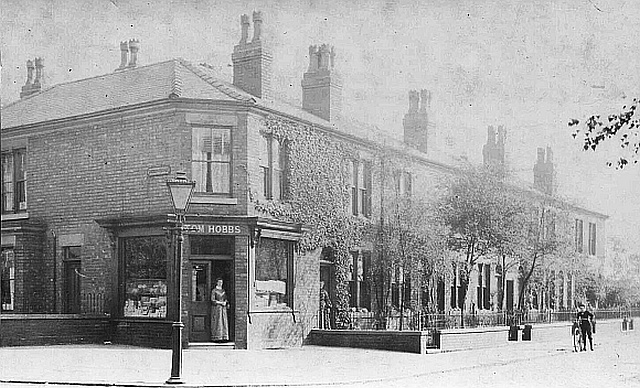
On the corner of Warren Road is no. 105 Beech Road, which was once a traditional 'corner shop', run by Tom Hobbs at the time it was photographed, c. 1908 with his wife Mary Ellen standing in the doorway. Born in the Bristol area, Tom had found his way to Stockport to work as assistant in the shop, previously run by George Hulme (no relation!) and then became the owner.
In 1939 it was still a shop, run by Sydney J. Leech, Master Grocer, born 1889, and and his wife Jessie. Eventually, like most of these little shops, it lost out to the 'chain stores' and was converted to a house.
The builder's house
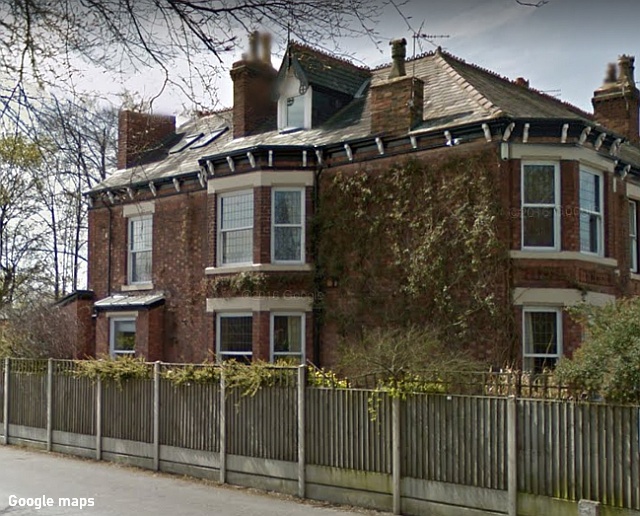
A pair of small houses, 'Turton Terrace' (101-103 odd) dated 1888, are followed by three groups of four (77-99 odd). No.77, seen above, on the corner of the entry road to the Cricket Club pavilion, has the benefit of additional space and windows on the end, and was built as the home of builder Henry Wild himself.
Notable residents
Of the many hundreds who have lived on Beech Road, there are a number whose lives and achievements have been recorded elsewhere. Some of them have come to our attention in various ways; they form the basis of the brief selections below.No.71 - George Ernest Bennett, Engineer
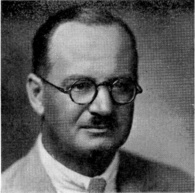 'Heatherdene',
71 Beech Road, was in 1901 the home of a Stockport-born
wholesale grocer. George Bennett, his wife Nellie
Walker Bennett (formerly Firth), son George Ernest
Bennett (aged 16, student) and a domestic servant, Mary
Hughes, aged 22, born in Chester.
'Heatherdene',
71 Beech Road, was in 1901 the home of a Stockport-born
wholesale grocer. George Bennett, his wife Nellie
Walker Bennett (formerly Firth), son George Ernest
Bennett (aged 16, student) and a domestic servant, Mary
Hughes, aged 22, born in Chester.George Ernest Bennett was born on Christmas day 1884, and educated at Stockport Grammar School, followed by engineering at the University of Manchester, earning an Honours BSc(Eng) degree in 1904. Two years later he received his MSc, by which time he had completed his practical training as a pupil J. J. Webster during which he worked on the design of the Runcorn - Widnes transporter bridge, and the 1908 Franco-British Exhibition in London, He was resident engineer for repairs to Llandudno Pier in 1907-8, before joining a Manchester firm of civil engineers.
In 1910, having been elected a member of the Institution of Mechanical Engineers, he left England for India, where he worked on railway bridges and port installations; in 1930 he became Deputy Chief Engineer to the Bombay Port Trust. He spent World War II in India running the Government War Supplies Department, until 1942 when he became a consulting engineer on many projects until returning to England with his wife Sophia Frances Bennett on the S.S. Modasa in 1946, by which time his widowed mother was living at 31 Frewland Avenue, Davenport. They made their home at 'Ravenswood', Bramhall Lane, being among the last residents before the building was replaced by modern flats. George Ernest Bennett died in 1971. His son, Oliver Bosshardt Bennett, was awarded the OBE in 1962 and later CBE for public services in Rhodesia.
'Heatherdene' in 2020, along with its neighbours, is part of the Richard House care home; the name is just readable on its gatepost.
Source: Institution of Civil Engineers Obituary
No. 29 - John Clarke Morten, Soldier
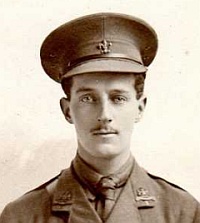 'Arnwood', 29 Beech
Road, was built in 1899 on land leased from Henry Bell for
the building of a home for Charles Stanley Morten
and his family. He was also landlord of no. 27,
Arnwood's slightly less ostentatious semi-detached partner,
and the adjacent smaller pair 23 and 25.
'Arnwood', 29 Beech
Road, was built in 1899 on land leased from Henry Bell for
the building of a home for Charles Stanley Morten
and his family. He was also landlord of no. 27,
Arnwood's slightly less ostentatious semi-detached partner,
and the adjacent smaller pair 23 and 25.'Arnwood' is the name of a house that features in a well-known children's book of the time, The Children of the New Forest by Frederick Marryat. Perhaps this inspired the name of the house.
In 1901 the occupants were Charles Stanley Morten (age 44), a manufacturer's agent who marketed stiff shirt collars, and a pillar of Mount Tabor Methodist Church, with his wife Sarah Annes Morten (44), daughter Martha Annes Morten (11), nine-year-old son John Clarke Morten (known to the family as Jack) and general servant Paulina Williamson. By 1911, aged 19, Jack was assisting his father in the firm.
When war broke out in 1914, Jack, along with other lacrosse players in the area, enlisted in the 1st/7th (Territorial) Battalion of the Manchester Regiment, based in Burlington Street, Manchester and after a short training period he found himself on a ship bound via the Suez Canal for the Sudan, and reaching Khartoum by train. After some time in the Sudan he returned to Egypt, and by May 1915 found himself on the Gallipoli penninsula where a battle with the Turkish army was raging. After the British army was forced to retreat, he was on a Greek island, now promoted from Lance Corporal to Second Lieutenant, until he damaged his hand and was sent to a hospital in Malta, and then to a hospital in Manchester. In May 1916 he was back in Egypt, and the following year in France, where he was wounded. In 1918 he was hit by the terrible influenza epidemic of that year, surviving to spend time attached to the Royal Air Force. After the war he joined a firm run by his sister's family; in 1925 he married Phyllis Nield, daughter of R.H. Nield, the piano dealer who eventually became part of well-known Stockport shop Nield and Hardy. Phyllis had worked as a nurse during the war.
Charles Stanley Morten died in 1944, having in 1942 made over the house for the use of a Methodist minister. A sale notice from 1956 describes the house having: 'vestibule, hall, two entertaining rooms, kitchen with bungalow range, scullery, 3 bedrooms, boxroom, bathroom with w.c. on first floor; 2 bedrooms on 2nd floor. Cellars with outside entrance, good garden and outside w.c.'
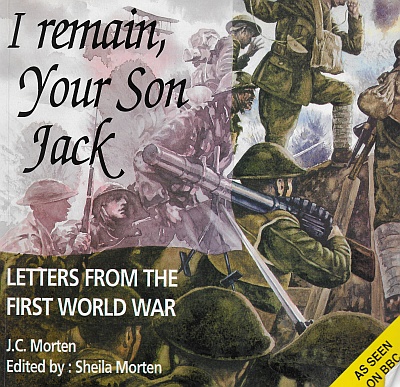
John Clarke Morten died in 1948. Forty-four years later, he became a posthumous celebrity author. In 1987, following Phyllis's death, her family were clearing her house for sale when they discovered a shoe box containing Jack's wartime letters home. His daughter-in-law Sheila Morten embarked on the task of transcribing and annotating them for a book, I Remain, Your Son, Jack: Letters from the First World War which was published by Sigma Press in 1992, and featured in newspapers and on Television. This fine book is sadly now out-of-print, but second-hand copies can be found online, and very well worth reading if you are interested in twentieth-century history.
A friend and comrade of Jack Morten, John Douglas Green of no.61 Beech Road died in the 1915 Gallipoli attack; he was a comrade of Jack Morten, and is commemorated on the Cale Green Cricket Club. Their senior officer at Gallipoli in 1915, also killed in the battle, was Major James Herbert Staveacre, a brother of Wilson Bayley Staveacre.
The photograph of Jack is from The Great War Archive, University of Oxford www.oucs.ox.ac.uk/ww1lit/gwa); © Sheila Morten. The archive contains many other items used in the preparation of the book.
No. 33 - Arthur Henry Hammond, Artist
Arthur Henry Hammond, later known as Arthur Henry Knighton-Hammond, was resident at 33 Beech Road - built by Henry Wild in 1889 - for a short period, but is well worth including as one of a number of artists who made their homes in the Davenport area over the years. He was a prolific artist in a number of styles and media over a period of 75 years; a web search reveals hundreds of his works, but he is seldom mentioned in art circles today. Fortunately Peter Norris, and an enthusiast for his work, published a comprehensive biography in 1994, which came to our attention when an exhibition of his work was mounted at Stockport Art Gallery in the 2000s. The book is now out of print, but the Knighton-Hammond website has a biography and a comprehensive gallery of works. He was born in 1875 in Arnold, Nottingham, son of a shopkeeper, and studied art at the Nottingham School of Art, mostly in his spare time, before moving to London in 1900 in the hope of making a living as a professional artist. There he met Winifred Annie Reeves, (born 1884) and they married in 1902 and set up home in Marlow-on-Thames, one of many of the family's house moves. 1904 found them in Hounslow, then Woodford (Essex); by 1905 moved to Youlgreave in Derbyshire. In 1908 they were living in Conwy, North Wales, while by 1909 they had moved again to Stockport, initially at 98 Didsbury Road, and by 1911 to 'Thornlea', Woodford Road, Bramhall. The Census of that year records Arthur (age 35), Annie Winifred Hammond (27) - why Arthur reversed her name when filling in the form is a mystery - and their daughters Marjorie Una Hammond (8, born Marlow) and Dorothy Rita Hammond (5, born in Essex).

In 1914, by which time they were living at 9 Maple Road, Bramhall, they moved yet again, this time to 33 Beech Road, which became the family home throughout World War I. The house had formerly been the home of Theophilus William Pinn, a Congreational Minister, and his four daughters. Arthur continued painting until 1917 he was called before the Medical Board, only to be judged unfit for military service. The water-colour above is from his Cale Green period; he travelled around the local area, painting mostly water-colours, which are not included in the artuk.org collection, resulting in poor representation of his prolific output.
For a while he became a rail commuter, working in the drawing office of the Simon Carves, where he met Lord Moulton, of the Ministry of Munitions, which led to commissions to portray industrial plants, first in Britain and then in America, under the patronage of Herbert Dow of the Dow Chemical Company. In 1920 Winifred and her daughters joined Arthur in America, having sold no. 33 by auction in July 1920 as well as all its contents, including 'a fine collection of oil paintings and water colour drawings, landscape and figure subjects by Arthur Hammond (works exhibited at the Royal Academy) and artist's utensils and materials.'
Winifred reportedly didn't enjoy the USA, and at the end of 1920 they sailed back to England, where they bought for £770 a house called 'Avondale' in Garner's Lane, Davenport (contact us if you know which one that was). They didn't stay long; a 1922 electoral register records them at 9 Station Road, Cheadle Hulme, one of a number of large houses which stood on what is now the site of the Shopping Centre.
Having added his mother's maiden name 'Knighton' to his name, Knighton-Hammond went on to have many artistic adventures including trips to France and Italy, leading to a divorce from Winifred, who preferred to stay in England. The 1939 Register finds her living with daughter Marjorie and son-on-law James Hassall at 79 Ack Lane, Bramhall. She died there in 1954.
Arthur Knighton-Hammond eventually settled down in southern England with his third wife Iris (his second wife had died young) and died in Dorset in 1970.
Further reading
The above are by no means the only notable people who have lived in Beech Road. For example, William Astle, editor of the Stockport Advertiser and author of a history of Stockport, lived at no.65, and William Walmsley, one of the founders of Jaguar cars, was at no.57 before moving to Woodsmoor. Mentioned in other features on our site are David Fogg, Thomas Machin, Gilbert Burrows and William Ewart Clucas.
Thanks
Thanks are due to the residents of 76 Beech Road; to Maureen Siddall for information about George Bennett; to Peter Norris and Michael Hammond for their book, contribution, and permission to use images. Also to the other authors mentioned in the text. Copyright images will be removed on request.Written by Charlie Hulme, December 2020. Comments welcome: charlie@davenportstation.org.uk